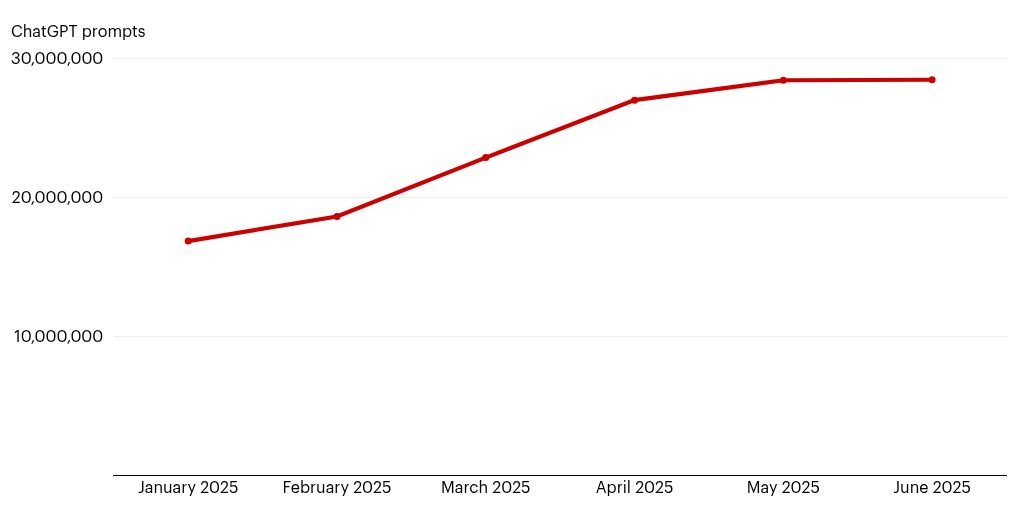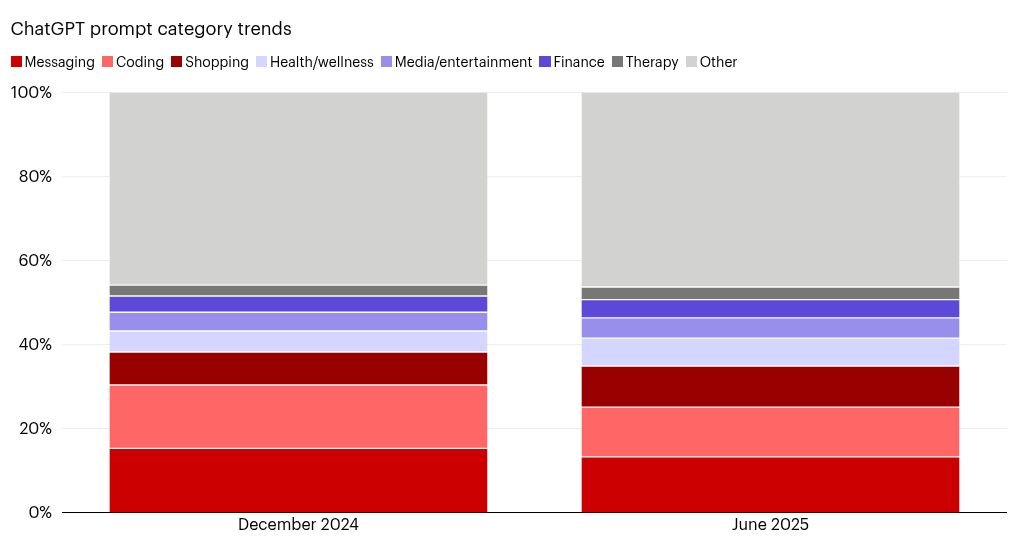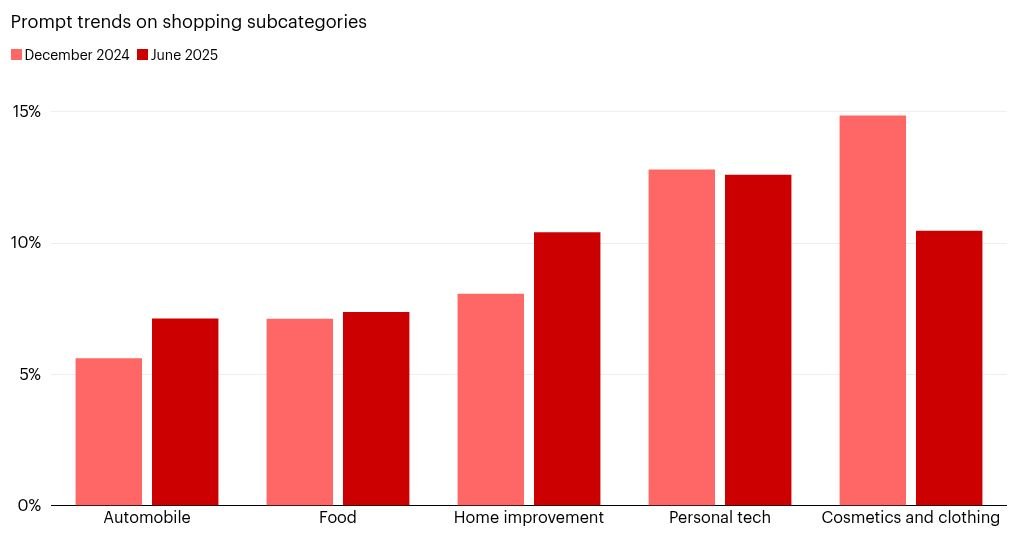ChatGPT usage continues to climb fast. The number of prompts grew by nearly 70% during the first half of 2025, according to a sample by market intelligence firm Sensor Tower. While the total number of ChatGPT prompts would be much higher, Sensor Tower’s sample alone rose from about 17 million in January to slightly less than 29 million in June (see Figure 1).
Source: Sensor Tower
This growth signals more than just curiosity; it’s a shift in behavior. As usage scales, so does the need to understand what people are doing with these tools (see Figure 2).
Source: Sensor Tower
Shopping is big
Shopping is the biggest mover. It jumped from 7.8% to 9.8% of all searches, a 25% category gain on top of 70% total ChatGPT growth. That means shopping queries doubled in the six months from January to June.
That’s a big deal for anyone that counts on search to find customers. Optimizing for AI (AIO)—also called generative engine optimization (GEO)—with ChatGPT and Perplexity is no longer an option for B2B and consumer brands.
Other interesting observations:
- Coding searches dropped from 15.1% to 11.9%. That could be because coding was one of the earliest applications, so there’s less growth. But it could also be because coders are using coding assistant tools, such as Cursor, or vibe-coding tools such as V0, Replit, or Loveable, which are all powered by Anthropic’s Claude Code. OpenAI’s ChatGPT5 launch on August 7 discussed coding capabilities at length, including noting that GPT5 will now be the default model for Cursor.
- Healthcare saw notable growth as more people turned to ChatGPT to interpret test results and understand diagnoses. At the ChatGPT5 launch, OpenAI also highlighted that the new model is further optimized for healthcare use cases.
Drilling down into the shopping data shows some products gaining over others, with the strongest signals coming from personal tech, home improvement, and cosmetics and clothing. These shifts might not be statistically significant yet, but brands in some spaces may already be feeling a drop in traditional search traffic (see Figure 3).
Source: Sensor Tower
Clicks are growing fast
OpenAI has been quietly expanding the number of live links in ChatGPT answers, and users are noticing. Between March and June, click-throughs tripled (from around 100,000 to 300,000), with the average rate jumping from 2.2% to 5.7% (see Figure 4).
Source: Sensor Tower
This shift suggests that users aren’t using ChatGPT just for recommendations but also to find links to specific products or content, similar to a traditional search engine. If you run a content site or e-commerce business, it’s no longer enough to be mentioned; you need to be linked.
What this means for business and investors
All signs point up, but where this flattens out is still unclear. In the short term, companies should be thinking about how to optimize their online content for AIO platforms—figure out what helps bots find and surface your content.
Investors should be looking carefully at companies that rely on search. This could be an opportunity to leapfrog the competition by investing early in this space, or the business could face setbacks if competitors beat them to it. Watch for the introduction of ads or sponsored content in AIO results as those companies look for ways to monetize their efforts.
Ad-funded businesses should receive special scrutiny: Will ChatGPT mean fewer visits to websites? Will new business models arise where content creators are compensated in some other way?

Artificial Investment Substack
More from author Richard Lichtenstein
Additional commentary on gen AI, advanced analytics, and private equity investing is available at Artificial Investment, Richard Lichtenstein’s independent Substack. Subscription is optional. Click to read.


























